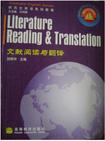文献阅读与翻译
出版时间:2007-1 出版社:高等教育出版社 作者:胡庚申 编 页数:281
Tag标签:无
前言
在“科教兴国”的基本方针指引下,我国的研究生教育有了蓬勃的发展。随着各层次、各类型研究生教学的开展,英语教学也面临着越来越高的要求。((研究生英语系列教程》就是为了适应这一新的形势而编写的系统教材。《研究生英语系列教程》是以教育部(原国家教委)颁布的((非英语专业研究生英语教学大纲》为依据,根据我国研究生教学的实际情况和国家对2l世纪高级技术与管理人才的要求进行编写的。考虑到目前我国研究生层次多,其入学英语水平参差不齐,需要以不同水平为起点,因此本系列教程的编写原则是:既从当前研究生的实际水平出发,也力求满足新世纪对高层次人才的期望,既重视培养学生扎实的语言技能,更注重提高其全面的应用能力;既注意语言教育,更重视素质教育。本系列教程具有以下特点:1.在编写中注意吸收我国在长期的研究生英语教学和教材编写中积累的丰富经验,同时充分采纳国外的先进教学理论和方法,力求有所继承又有所创新,使本系列教程成为具有中国特色的新一代研究生英语教材。2.本系列教程统一设计,分工编写,涵盖了自研究生课程班学生、硕士生至博士生的全部教学过程。各个分册目的明确,相互衔接,系统性强。由于我国研究生入学时的英语起点不一,对英语的教学目的和要求也不尽相同,因此各分册又相对独立,有利于在教学中根据学生的实际情况和水平灵活使用。即可以从第一册开始,也可以从后续教材开始;可以使用全套教材,也可以针对本专业需要有所选择地使用。3.研究生阶段培养的是高层次的专业人才,其英语教材应体现先进性和学术性。本系列教程务求内容新颖、知识性强,并且具有学术英语(Englishfor academicpurposes)的特点。同时,语言是交际工具,非英语专业研究生掌握英语的目的是为了进行国际之间的信息交流和从事各种涉外业务活动,研究生英语教学也必须重视学以致用的原则。为此,本系列教程讲求实用,选材广泛,具有鲜明的时代特征。本系列教程由基础阶段教材和提高阶段教材组成。基础阶段《多维教程》:包括3册教材,即:《探索》、《熟谙》、《通达》。
内容概要
本书是教育部“高等教育面向21世纪教学内容和课程体系改革计划”的研究成果,是面向21世纪课程教材和教育部“九五”规划教材。本书是《研究生英语系列教程》提高阶段的重要组成部分,通过不同专业文献和翻译技能两条主线,平行铺开,旨在帮助学习者了解和掌握专业文献的基本内容、语言特点以及全方位的信息检索,培养并提高他们阅读和翻译各种专业文献资料的能力。 本书可作为高等学校非英语专业硕士生、博士生使用的教材,还可供具有相当于或接近于本科英语6级水平的英语自学者使用。
书籍目录
Unit 1 General Description of Literature Readinq and Tranalotion Topical Highlights Theme Presentation 1.Definition of Literature 2.Classification of Literature 3.Linguistic Features of Scientific Literature 4.Search for Relevant Literature Reflections and Practice (1) Supplementary Readings on Informational Retrieval Translation Skills (1): Translation in General and Translation of Special Literature Special Attention: The Translation of Documentation Reflections and Practice (2)Unit 2 Standards Topical Highlights Theme Presentation 1.Definition of Standard 2.Classification of Standards 3.Linguistic Features of Standards 4.Search for International Standards, Sample Analysis Reflections and Practice (1) Supplementary Readings on Standards Translation Skills (2): Diction Special Attention: The Translation of Standards Reflections and Practice (2)Unit 3 Patents Topical Highlights Theme Presentation 1.Definition of Patent 2.Classification and Formation of Patents 3.Linguistic Features of Patents 4.Search for Patents Sample Analysis Reflections and Practice (1) Supplementary Readings on Patents Translation Skills (3): Amplification Special Attention: The Translation of Patents Reflections and Practice (2)Unit 4 Trademarks Topical Highlights Theme Presentation 1.Definition of Trademark 2.Classification of Trademarks 3.Linguistic Features of Trademarks 4.Search for Trademarks Sample Analysis Supplementary Readings on Trademarks Reflections and Practice (1) Translation Skills (4): Omission Special Attention: The Translation of Trademarks Reflections and Practice (2)Unit 5 CopyrightsUnit 6 Contracts and AgreementsUnit 7 Tender DocumentsUnit 8 ProposalsUnit 9 AbstractsUnit 10 ReportsUnit 11 Professional PapersUnit 12 Coference DocumentsUnit 13 ReviewsUnit 14 IndexesUnit 15 BibliographyAppendixes
章节摘录
manufacturers conceived the idea of bypassing wholesalers and retailers and reaching the consumer through direct advertising,mainly by means of catalogs.The pioneers in this field were seed companies and book and pamphlet publishers.Mail-order houses appeared on the scene as early as the 1 870s.To the present day they have continued to expand their businesses through direct-mail camlog and flyer advertising,although some of the biggest houses sell also through retail outlets.Patent medicine companies loomed large in newspaper and magazine advertising starting in the late 1 870s.They found a ready market because doctors and reliable pharmacists were scarce outside the populated areas,and the frontier settlers and farmers had to do much of their own doctoring.The patent medicine bottlers made a gross profit of from 80 to 90 percent and could therefore well afford to spend money publicizing their remedies.Railroads and steamship lines also were among the early users of advertising in the U.S.,not only to praise the luxury and comfort of their modes of travel but also to publish their schedules and rates.Late in the 1 9th century many American firms began to market packaged goods under brand names.This development initiated a new era in the history of advertising. Previously,such everyday household products as sugar,soap,rice,molasses,butter,milk, lard,beans,candy,candles,and pickles had been sold in neighborhood stores from large bulk containers.As a result,consumers had seldom been aware of,or influenced by, brand names.The soapmakers were early advertisers of packaged and branded products.The first household name soap brands,which date from about 1 880,include Ivory,Pears’,Sapolio, Colgate,Kirk’S American Family,and Packer’S.Soon afterward such brands as Royal Baking Powder,Quaker Oats,Baker’S Chocolate,Hire’S Root Beer,Regal Shoes,and Waterman’S Peas were nationally advertised.Shortly after the turn of the century Americans began to be aware of such brand names as Bon Ami,Wrigley,and Coca-Cola.After World War I advertising developed into a business SO big that it became almost a trademark of America itself in the eyes of the world.This expansion was stimulated by many technical improvements,and the expanding American indus时inspired innovations and improved techniques that benefited other facets of business in the nation.The increased use of electricity led to the illuminated outdoor poster;photoengraving and other modem printing inventions helped both the editorial and advertising departments .
图书封面
图书标签Tags
无
评论、评分、阅读与下载
用户评论 (总计28条)
- 章节内容分的不错,而且不仅单学习英语,还能了解许多其他领域专业方面的知识
- 是本研究生的好教材
- 内容不错与老师要求的一样
- 两本都不错,很喜欢。实用
- 老师推荐的,应该不错的
- 书是正品,买了是为了学习,还是不错的
- 东西正品,还没有时间看呢
- 书的质量等各方面比较满意。就是送货比较慢,我觉得在上海这种大城市市区,应该在3天之内到达。
- 不错,就是折扣低了点。
- 赞许
- 翻译理论和技巧部分特色不是很突出,对文献种类和特点的介绍还算详细,
- 教材就是教材的样子,内容比较权威。
- 做教材难度有点大
- 指定教材,还不错,有点难度
- 这本书各方面都不错
- 送给图书馆了。
- 没得选,一定得买
- 书有点破损。。不过整体还是好的。
- 学校规定的教材,所以买了,没怎么看,不知道怎么样。
- 书的质量不错,就是物流太慢了!
- 首先,用了9天时间才到达,耽误了我上了,被老师骂,其次,书的质量差的不行,多处破损,就和用过19年的没有区别,大家千万别买!从来没见过那么慢的速度和那么差的书籍!倒霉!
- 书中有大量的例文,但字体很小,很累眼睛。材料太老。有拼写错误。例文太专业,非研究那个问题的专家,很难看懂,还是英文的,查也查不到的专业词汇。而且集中在progmatics等几个少数学科。我们初学写论文弄几篇通俗易懂的能说明问题的文章就行了。还有课后讨论题,不知道世界上有几个人会去讨论。
- 老师要求作为教材的,不买不行
- 上课的课本,纸张不太好
- 内同还行吧,用作翻译练习
- 很不错的教材,很实用
- 这本书是上课的教材,书的质量还可以,发货速度也比较快,总体上比较满意。
- 书本内容不错,比较有价值
相关图书
- 通用大学英语
- 语文教学参考书(第四册)试用本(教育部十五规划)(谢海泉)
- 语文教学参考书(第三册)(试用本)
- FrontPage网页设计与制作
- 概率论与应用数理统计/面向21世纪课程教材
- 体育实践课教程
- 大学生健康教育教程
- 马克思主义政治经济学原理
- 多维教程
- 中等职业学校专业目录
- 电脑美术设计专业教材
- 物业管理会计与统计
- AutoCAD 2000工程绘图教程
- Excel在会计中的应用
- 长虹新型大屏幕彩色电视机维修大全
- 电力电子技术
- 电子商务网络技术基础
- 电子商务网站建设
- 房屋卫生设备
- 服装生产技术管理(服装类专业)/中等职业学校教育部规划教材
- 机械制图
- 机械制图习题集
- 机械制图习题集
- 计算机应用案例教学AutoCAD2000中文版
- 计算机应用基础
